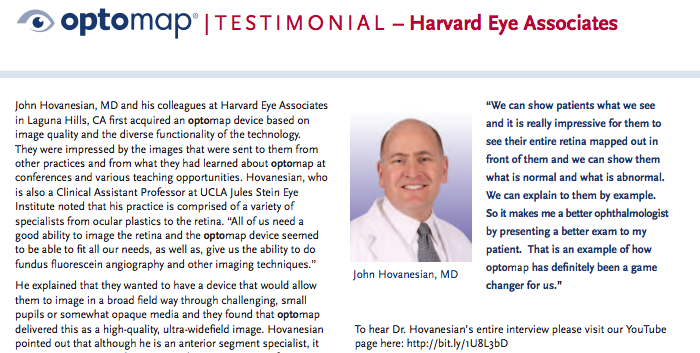This June is Cataract Awareness Month, and the American Academy of Ophthalmology along with several other eye and vision care organizations want to stress the importance of early screening, early detection, and appropriate treatment of cataracts in order to preserve eyesight for anyone dealing with this condition.
What is a Cataract? Causes, Symptoms, Diagnosis, & Treatment
More than 24 million Americans aged 40 or older are currently living with cataracts. Cataracts are actually the number-one cause of vision loss and blindness worldwide. But for something so commonplace, very few people know how they can reduce their risk of developing cataracts.
The human eye is made up of many different parts, one of the parts in the front of the eye is the eye lens. The eye lens is a clear structure found directly behind the pupil; it helps refocus light entering the eye. A cataract causes a person’s lens to become cloudy and opaque, typically due to changes in the lens’ protein structure. This effectively disrupts the way light normally enters the eye, which will affect your vision.
Why does this happen? According to the American Academy of Ophthalmology, there are a few known causes and risk factors, including:
- Family history (e.g., parents, siblings, or other family members with cataracts)
- Certain medical problems, including diabetes
- History of eye injury, eye surgery, and/or upper-body radiation treatments
- History of excessive time spent in the sun, especially if without sunglasses that would otherwise protect against ultraviolet radiation
Symptoms
Symptoms of cataracts include double vision, blurry vision, “ghost” images or “halos” around bright light sources, and the sensation of a “film” over the eyes. If you have cataracts, you may find that lights often seem too dim for reading and other work that requires seeing fine detail. Equally, you may be hypersensitive to bright lights. You may also find that your eyeglass prescription needs to change frequently—even if these changes don’t seem to make any meaningful improvement to your vision.
Diagnosis
Diagnosis is typically confirmed with dilation during an eye exam. During dilation, your eyecare professional will look inside of your eye to look for any signs or symptoms of cataracts. In advanced cases, a person’s pupils may look cloudy, milky, or yellowish.
Treatment
Getting cataracts treated is critical for preventing vision loss and blindness. Delayed diagnosis can also make it harder for eye doctors to treat cataracts, which is typically achieved via surgical removal. Cataract removal surgery is a relatively quick and simple procedure that is typically performed in an outpatient setting. The dysfunctional lens is removed and replaced with an artificial, intraocular lens.
How You Can Participate in Cataract Awareness Month
-
- Educate yourself and others: If you’ve been diagnosed with cataracts, learn about the disease by talking to your eyecare professional. Understanding your condition will help you inform your friends and loved ones about it and may even inspire them to get screened for this and other eye diseases.
- Schedule an appointment with your eyecare provider: If you’ve never been tested for cataracts or if it’s simply been a while since your last eye exam, be sure to schedule an appointment with your eyecare provider. They can go over your family history, personal health history, and current vision and eye health to help you determine whether you’re at risk—or if you’re showing early warning signs of the disease.
If you have cataracts and are considering surgery, find an eye care provider who uses optomap®. optomap is the only ultra-widefield retinal image that can capture up to 200 degrees of the retina, even through hazy media such as cataracts. Including optomap in your exam will enable your eyecare professional to thoroughly evaluate the health of your retinas (the light-sensitive tissues on the inside of the back of your eyes) both before and after any surgical procedure. By identifying retinal problems upfront that may delay cataract surgery or slow your recovery, your eyecare professional can work with your surgeon to ensure the best plan of care1.
The features of an optomap also make it the preferred diagnostic tool for many eye doctors, including Dr. John Hovanesian of Harvard Eye, who understands that many problems with retinal health are subtle and easy to miss with less precise tools.
Please visit our website for more information on optomap.
Additional Sources:
1 Assil, et. al. The Role of Ultra-widefield Retinal Imaging as a Standard Assessment Tool in the Cataract Practice, Assil Eye Institute, Beverly Hills, California, US; 2. Batra Vision, San Leandro, California, US.
